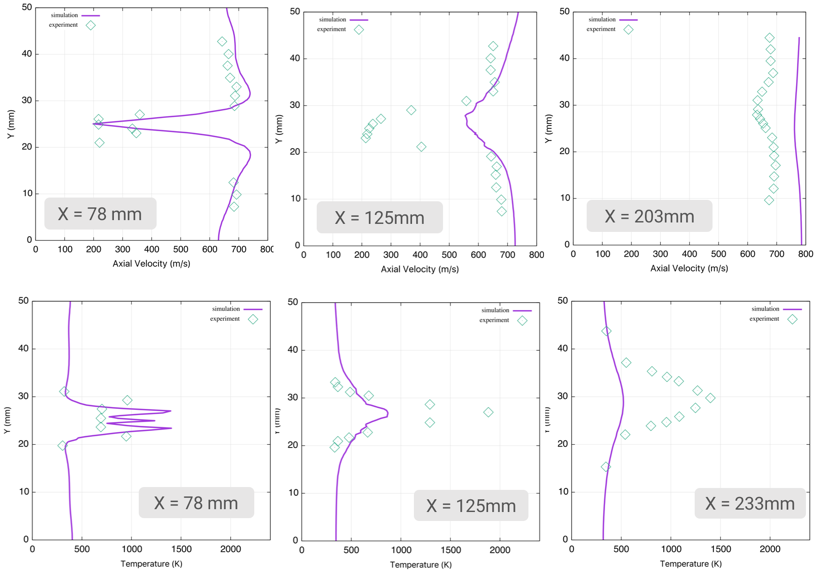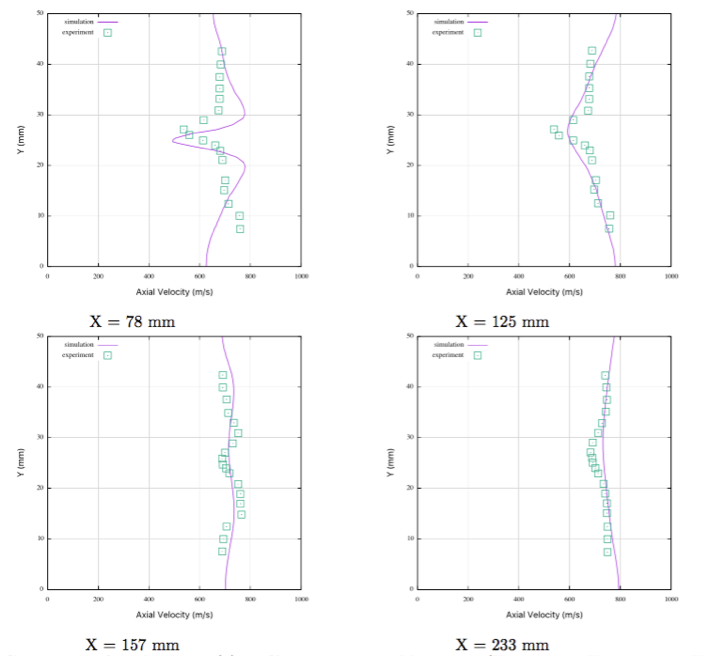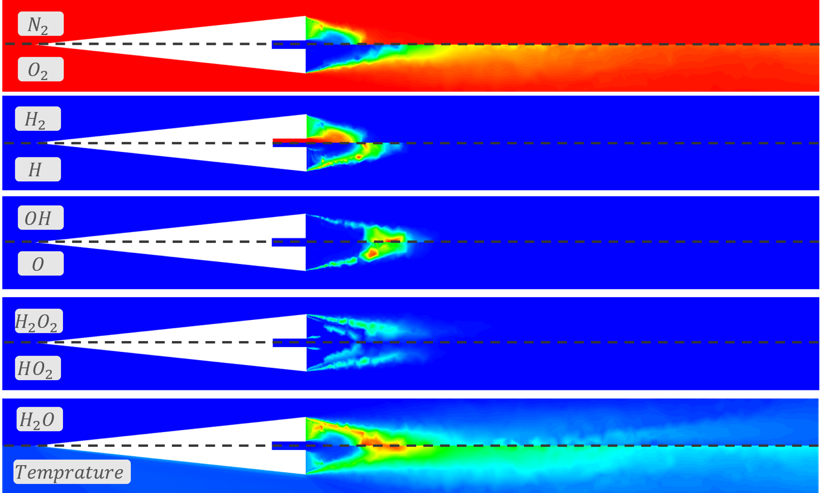Research on combustor simulation
JAXA Supercomputer System Annual Report April 2016-March 2017
Report Number: R16E0112
- Responsible Representative: Yuichi Matsuo(Aeronautical Technology Directorate, Numerical Simulation Research Unit)
- Contact Information: Rui Toyonaga(toyonaga.l.0121@ruri.waseda.jp)
- Members: Rui Toyonaga
- Subject Category: Basic Research(Numerical analysis)
Abstract
For the development of the air breathing engine combustor in space plane,we develop the chemical reaction flow calculation code using the Flamelet Approach. In order to evaluate this code insupersonic region, a verification is performed on the experimental data of the strut-injection supersonic combustion flow field designed by German Aerospace Center.
Goal
For the development of air breathing engine combustor in space plane, development of the calculation code that can reproduce both the compressible combustion field is intended to contribute to the Improvement of transport efficiency in space development.
Objective
We develop a highly practical compressible chemical reaction flow calculation code and clarify the mixing mechanism and the flame structure of supersonic combustion by numerical calculation in a SCRAMJET combustor.
References and Links
N/A
Use of the Supercomputer
LES analysis in the strut-injection supersonic combustion flow field designed by German Aerospace Center is conducted, using combustion calculation code which is developed based on the compressible fluid analysis solver FaSTAR (JAXA / Fast Aerodynamic routine).
Necessity of the Supercomputer
It is necessary to use supercomputer to conduct development and verification of the combustion calculation code.
Achievements of the Year
Based on the compressible fluid analysis solver FaSTAR, a compressible chemical reaction flow calculation code based on the Flamelet Approach was developed and a verification calculation was conducted for the DLRsupersonic combustion experimental data. In the case of using only non-combustion condition, good agreement with the experiment such as axial velocity distribution and temperature distribution were seen (Fig.1). In addition, in combustion condition, it was possible to confirm the dissipation and the generation of chemical species during the combustion and showed a qualitative agreement (Fig.2 and Fig.3).

Fig.2:Comparison of static velocity and static temperature profiles at various axial locations (combustion condition)
Publications
N/A
Computational Information
- Parallelization Methods: Process Parallelization
- Process Parallelization Methods: MPI
- Thread Parallelization Methods: n/a
- Number of Processes: 1024
- Number of Threads per Process: 1
- Number of Nodes Used: 32
- Elapsed Time per Case (Hours): 48
- Number of Cases: 12
Resources Used
Total Amount of Virtual Cost(Yen): 1,577,750
Breakdown List by Resources
| System Name | Amount of Core Time(core x hours) | Virtual Cost(Yen) |
|---|---|---|
| SORA-MA | 928,730.36 | 1,506,157 |
| SORA-PP | 2,763.20 | 23,592 |
| SORA-LM | 0.00 | 0 |
| SORA-TPP | 0.00 | 0 |
| File System Name | Storage assigned(GiB) | Virtual Cost(Yen) |
|---|---|---|
| /home | 238.42 | 1,905 |
| /data | 3,814.70 | 30,486 |
| /ltmp | 1,953.13 | 15,609 |
| Archiving System Name | Storage used(TiB) | Virtual Cost(Yen) |
|---|---|---|
| J-SPACE | 0.00 | 0 |
Note: Virtual Cost=amount of cost, using the unit price list of JAXA Facility Utilization program(2016)
JAXA Supercomputer System Annual Report April 2016-March 2017




